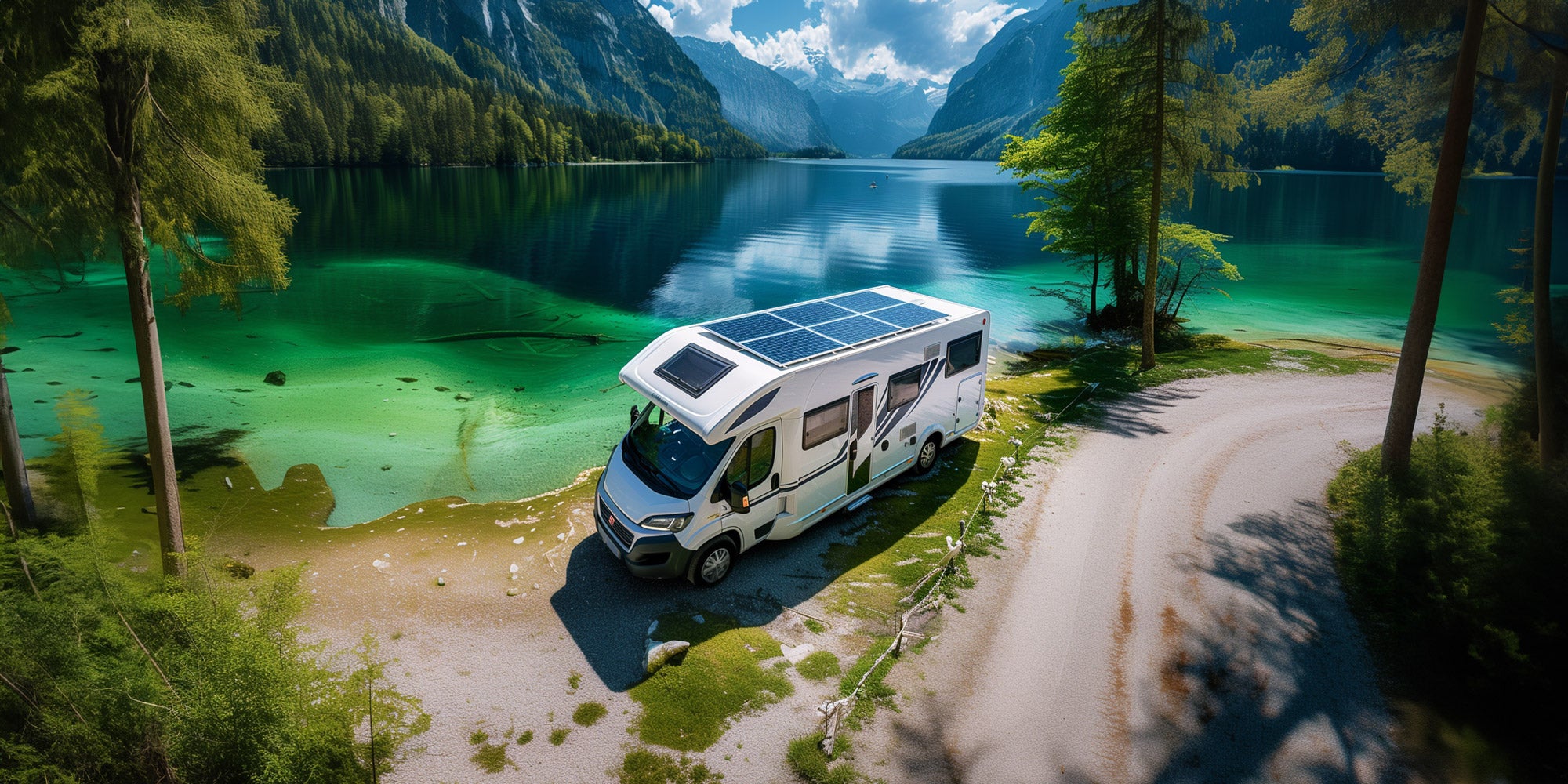
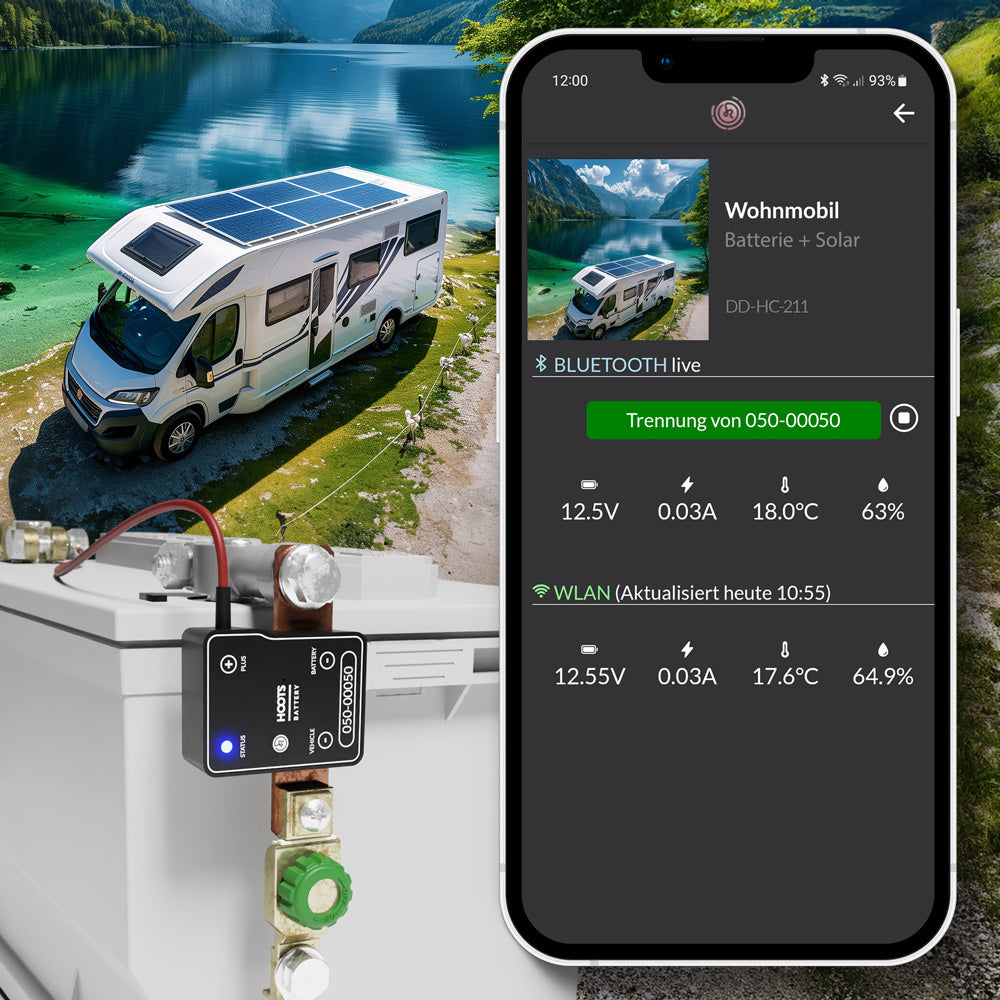
Weshalb ein Batterie Computer im Wohnmobil nützlich ist?
Ein Batteriecomputer im Reisemobil, wie der SmartShunt 500A, ist unerlässlich für eine präzise Batterie Überwachung. Mit einem mess shunt am minuspol der batterie misst er strom und batteriespannung, überwacht den ladezustand und zeigt alle daten in Echtzeit an. Verschiedene batterietypen können so optimal gemanagt werden. Ein Batteriemonitor und Batteriecomputer ermöglicht es, den Verbrauch zu kontrollieren und die Solaranlage effizient zu nutzen, wodurch unvorhergesehene Ausfälle vermieden und Beiträge zur Lebensdauer der Batterie geleistet werden.
Weshalb ein Batterie Computer im Wohnmobil nützlich ist?
Ein Batteriecomputer im Reisemobil, wie der SmartShunt 500A, ist unerlässlich für eine präzise Batterie Überwachung. Mit einem mess shunt am minuspol der batterie misst er strom und batteriespannung, überwacht den ladezustand und zeigt alle daten in Echtzeit an. Verschiedene batterietypen können so optimal gemanagt werden. Ein Batteriemonitor und Batteriecomputer ermöglicht es, den Verbrauch zu kontrollieren und die Solaranlage effizient zu nutzen, wodurch unvorhergesehene Ausfälle vermieden und Beiträge zur Lebensdauer der Batterie geleistet werden.

Batteriecomputer per WLAN & Bluetooth
Weltweite Datenübertragung kostenlos per WLAN - keine fortlaufenden Mobilfunkkosten
Energie- & Akkuüberwachung
Stromverbrauch (Ampere) und Batteriespannung (Volt) aller Bootsbatterien jederzeit und überall überwachen
Batteriestatus global prüfen
Abruf der Batteriewerte von Ihrem Boot weltweit per App
Umgebungsmonitoring
Erfassung von Umgebungsparametern wie Temperatur, Luftfeuchte und WLAN-Status
.
Produkt
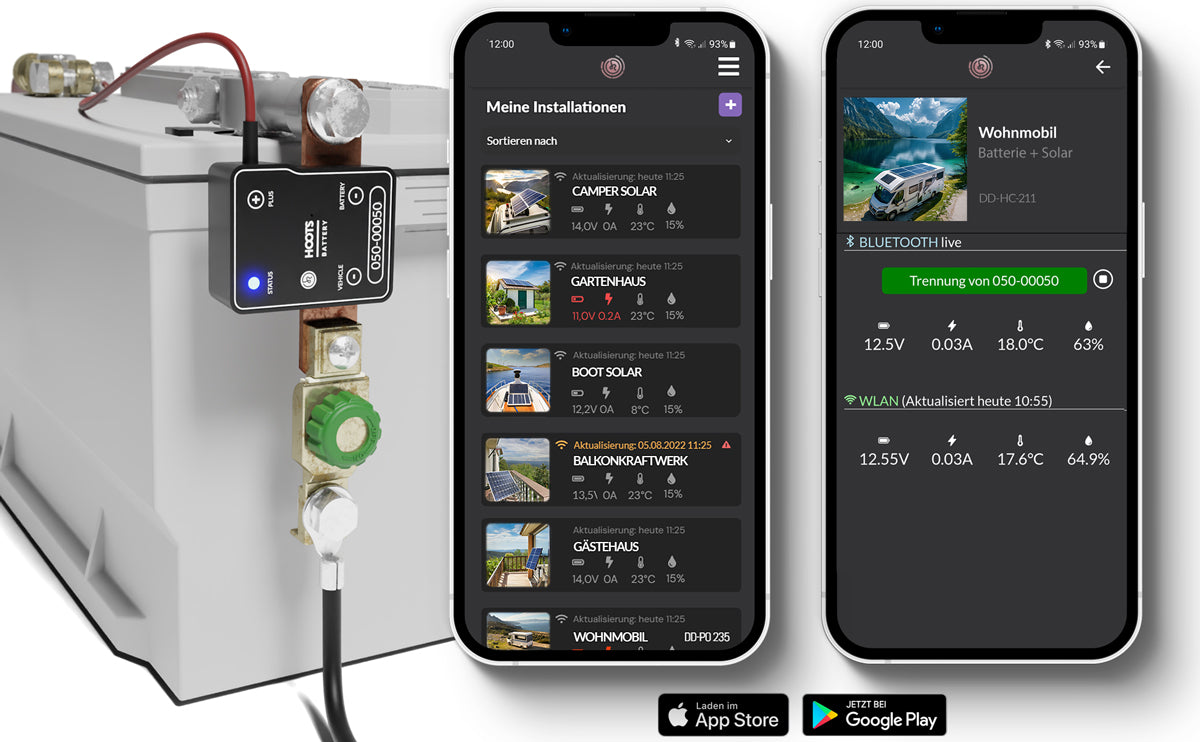
Unser Energiemanagementsystem - Deine Vorteile
Ein Batterieüberwachungssystem für Camper & Reisefahrzeuge: Alle Vorteile in einem Gerät.
✓ Erhöhte Sicherheit: Echtzeitüberwachung der Batteriewerte per Bluetooth Funktion und Temperatursensor schützt vor Gefahren und steigert die Sicherheit an Bord.
✓ Verbesserte Energieeffizienz: Genaues Monitoring durch den LCD Batterie Computer ermöglicht eine Anpassung des Energieverbrauchs für bessere Effizienz.
✓ Verlängerte Batterielebensdauer: Vermeidung von Über- und Tiefentladung verlängert die Lebensdauer und Leistung der Versorgungsbatterie.
✓ Komfortabel und zugänglich: Fernüberwachung und -steuerung per WLAN und App erleichtert die Nutzung, auch wenn man nicht direkt am Mobilheim ist.
✓ Langfristige Kosteneinsparungen: Effektives Batteriemanagement senkt Austauschkosten und optimiert den Energiebedarf, was zu finanziellen Einsparungen führt.
Unser Energiemanagementsystem - Deine Vorteile
Ein Batterieüberwachungssystem für Camper & Reisefahrzeuge: Alle Vorteile in einem Gerät.
✓ Erhöhte Sicherheit: Echtzeitüberwachung der Batteriewerte per Bluetooth Funktion und Temperatursensor schützt vor Gefahren und steigert die Sicherheit an Bord.
✓ Verbesserte Energieeffizienz: Genaues Monitoring durch den LCD Batterie Computer ermöglicht eine Anpassung des Energieverbrauchs für bessere Effizienz.
✓ Verlängerte Batterielebensdauer: Vermeidung von Über- und Tiefentladung verlängert die Lebensdauer und Leistung der Versorgungsbatterie.
✓ Komfortabel und zugänglich: Fernüberwachung und -steuerung per WLAN und App erleichtert die Nutzung, auch wenn man nicht direkt am Mobilheim ist.
✓ Langfristige Kosteneinsparungen: Effektives Batteriemanagement senkt Austauschkosten und optimiert den Energiebedarf, was zu finanziellen Einsparungen führt.

Batterieüberwachung per WLAN + Batteriemessgerät
Das HOOTS Batteriemanagementsystem Wohnmobil mit WLAN und Batteriemonitor Wohnmobil bietet eine innovative Lösung für CamperVans. Diese Batteriecomputer Technologie mit Shunt ermöglicht präzise Batterie Analyse im Reisemobil und Verwaltung des Energiemanagements. Ein Anzeigepanel und Batteriewächter 12V sorgen für optimale Leistung und Sicherheit.
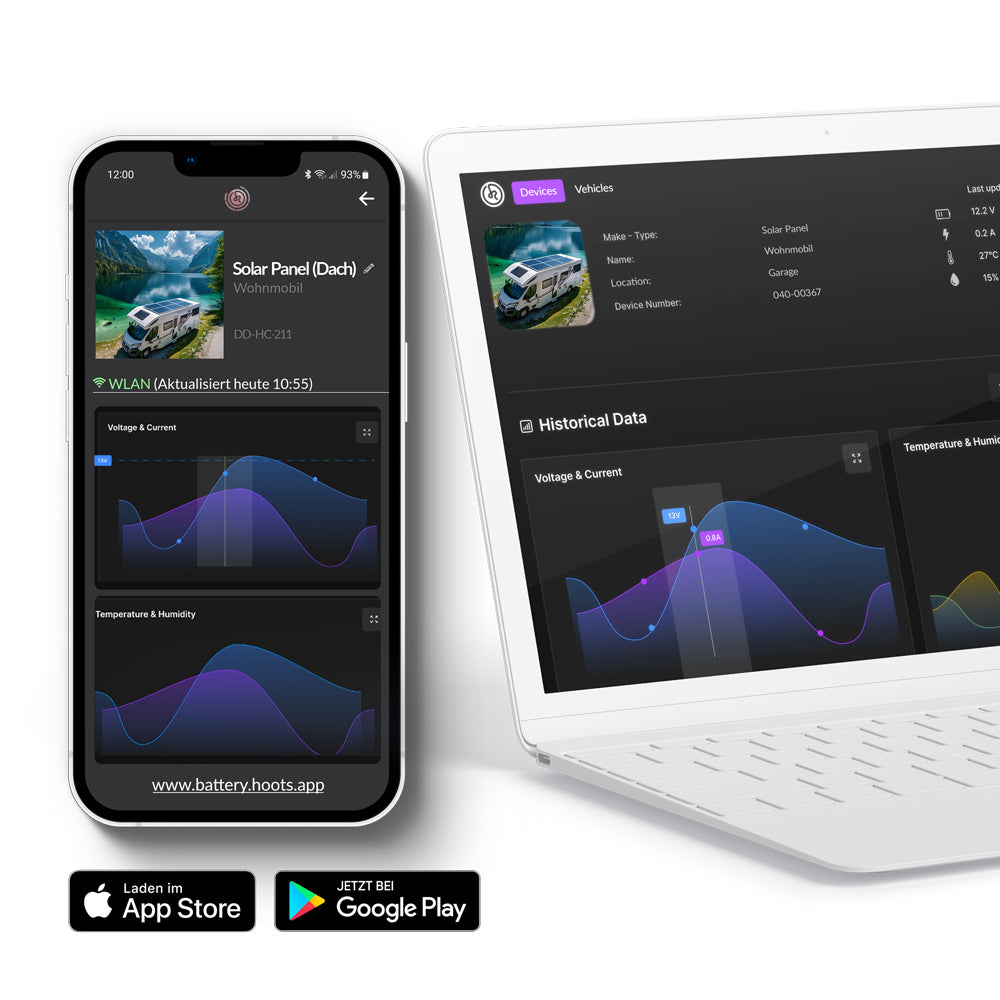
Verwendung in Wohnmobilen und CamperVans
In Wohnmobilen ist effizientes Batteriemanagement unverzichtbar, da die Energieversorgung oft isoliert und lebenswichtig ist. Ein WLAN-fähiges System mit Shunt ermöglicht bequeme Nutzung der Energiequellen und sorgt für Sicherheit und Komfort im Camper. Dank Bluetooth Funktion behalten Sie den Überblick über Lithium Batterien und Kapazität. Messshunts messen präzise Werte Ihrer Aufbaubatterie. Verschiedene Hersteller bieten passende Artikel für Wohnwagen und Caravan an.
Verwendung in Wohnmobilen und CamperVans
In Wohnmobilen ist effizientes Batteriemanagement unverzichtbar, da die Energieversorgung oft isoliert und lebenswichtig ist. Ein WLAN-fähiges System mit Shunt ermöglicht bequeme Nutzung der Energiequellen und sorgt für Sicherheit und Komfort im Camper. Dank Bluetooth Funktion behalten Sie den Überblick über Lithium Batterien und Kapazität. Messshunts messen präzise Werte Ihrer Aufbaubatterie. Verschiedene Hersteller bieten passende Artikel für Wohnwagen und Caravan an.

Hauptmerkmale und Vorteile
Verwendung in Wohnmobilen und CamperVans
Alle Features und wichtige Funktionen unseres Batteriemanagementsystems für Wohnmobile und Camper im Überblick
WiFi / WLAN-Verbindung
Ermöglicht das Remote Monitoring und die Steuerung der Batteriekapazität sowie der Batterietemperatur über Smartphone, Tablet oder Computer. Nutzer können die Batteriesysteme live per Batteriecomputer überprüfen und Einstellungen bequem aus der Ferne ändern.
HOOTS Wohnmobil Anzeigepanel
Die Technologie bietet präzise Einblicke in wichtige Batterieparameter wie Spannung, Stromstärke, Ladezustand, Entladezyklen und Temperatur. Dadurch kann der Zustand der Batterie im Caravan oder CamperVan genau überwacht werden.
HOOTS Echtzeit-Warnung und Benachrichtigungen
Das System benachrichtigt Nutzer bei kritischen Batteriezuständen wie Überladung, Tiefentladung oder abnormen Temperaturschwankungen.
HOOTS Datenanalyse mit Aufzeichnung
Durch die Erfassung und Langzeitaufzeichnung von Daten können Nutzungstrends und Muster der Batterie analysiert werden, um deren Lebensdauer gezielt zu optimieren.
Einbindung in vorhandene Systeme
Die Integration in bestehende Energieinfrastrukturen wie Solaranlagen, Generatoren und Wechselrichter erfolgt mühelos, um eine nahtlose Einbindung zu gewährleisten.
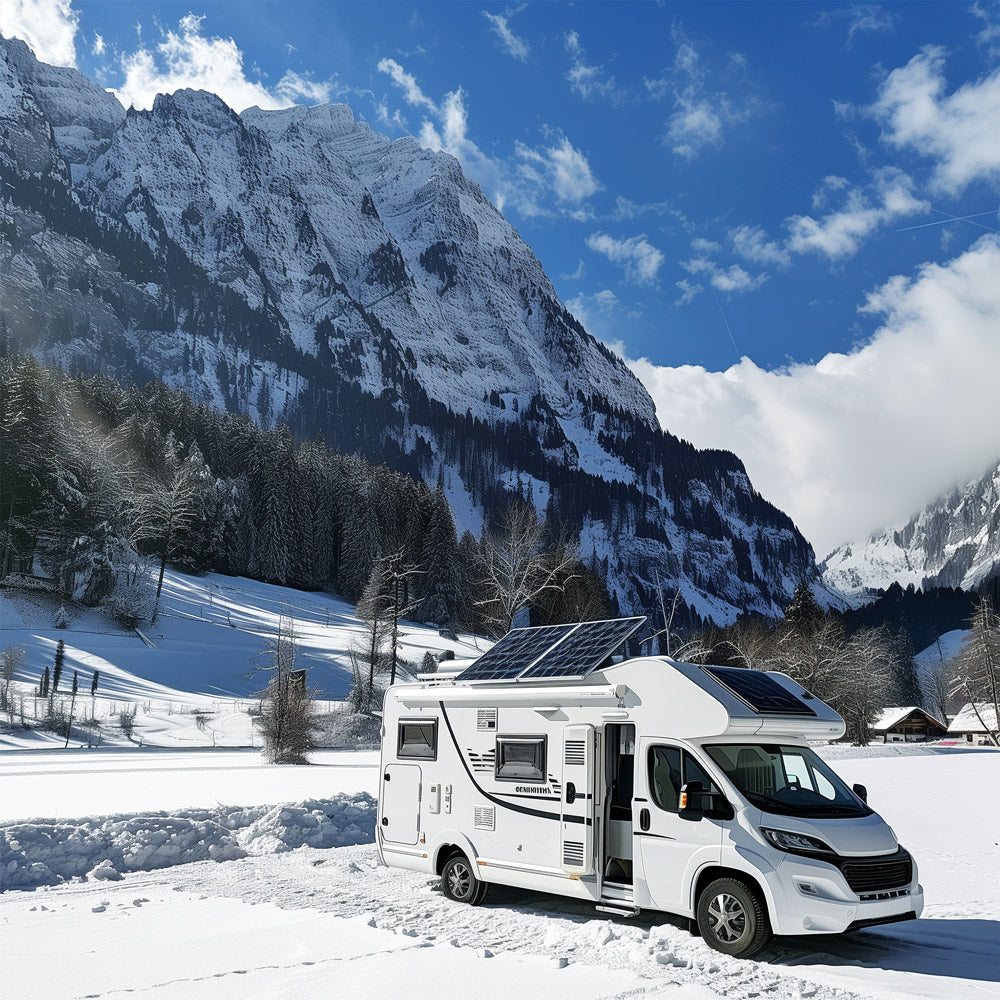
Campervan-Überwachung auf Performance-Level
Unsere Lösung für ein Energiemanagementsystem im Reisefahrzeug bietet eine zuverlässige Möglichkeit, den Batterieladezustand zu überwachen. Dank präziser Echtzeitdaten zu Spannung, Kapazität und Ampereanzeige stellen Batteriemonitore sicher, dass Ihre Wohnraumbatterie stets optimal arbeitet. Die integrierte Bluetooth-Funktion ermöglicht eine bequeme Datenkontrolle sowie Fernüberwachung mit direkten Benachrichtigungen auf Ihrem Smartphone.
Campervan-Überwachung auf Performance-Level
Unsere Lösung für ein Energiemanagementsystem im Reisefahrzeug bietet eine zuverlässige Möglichkeit, den Batterieladezustand zu überwachen. Dank präziser Echtzeitdaten zu Spannung, Kapazität und Ampereanzeige stellen Batteriemonitore sicher, dass Ihre Wohnraumbatterie stets optimal arbeitet. Die integrierte Bluetooth-Funktion ermöglicht eine bequeme Datenkontrolle sowie Fernüberwachung mit direkten Benachrichtigungen auf Ihrem Smartphone.

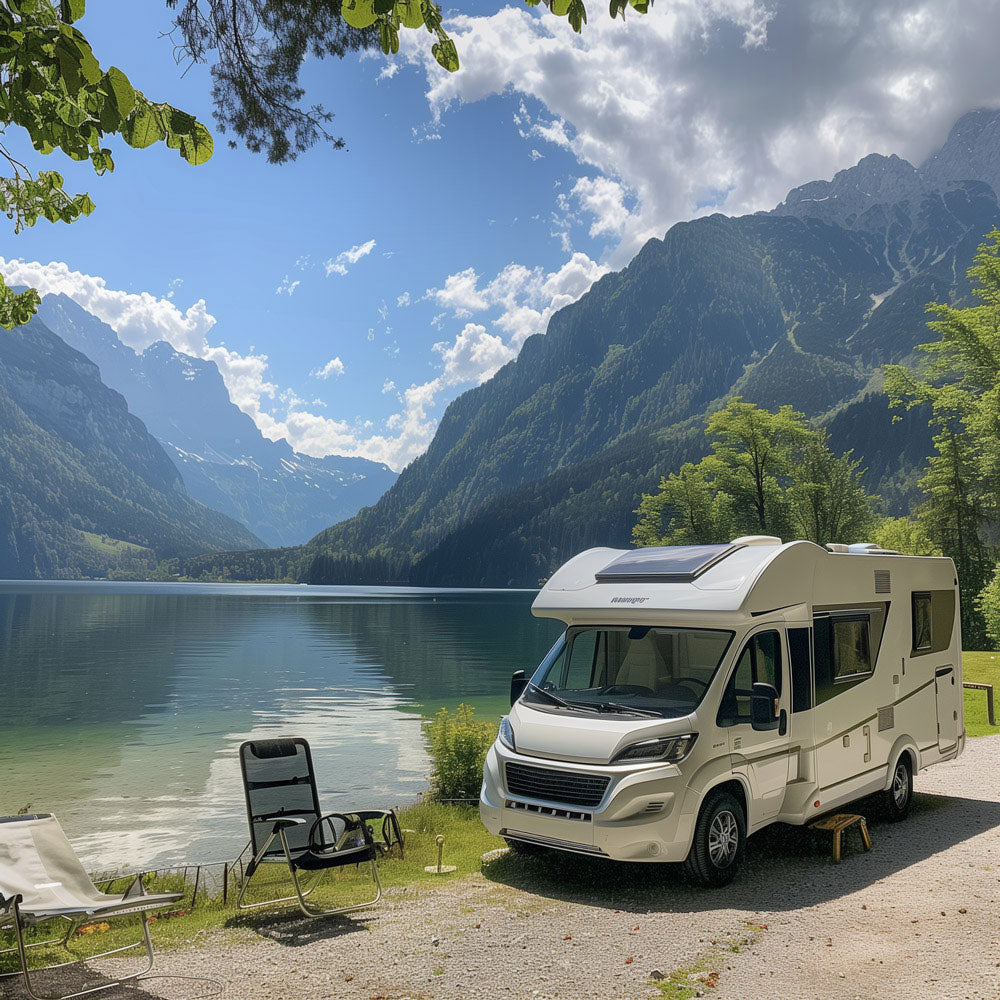
Batterie-Überwachung in Echtzeit mit Benachrichtigungen
Das System zur Batterie-Überwachung mit SmartShunt im Reisemobil liefert genaue Echtzeitdaten zu Spannung, Strom und Batteriekapazität. Über eine intuitive Bluetooth-App auf Ihrem Smartphone haben Sie jederzeit Zugriff auf diese Informationen.
Anzeigepanel Wohnmobil: Mit einem Batteriecomputer behalten Sie stets den aktuellen Zustand der Systemspannung, Entladung und Batteriekapazität im Blick mit einer Bluetooth Battery Guard Anzeige für 12V Versorgungsbatterien und andere Batterietypen.
Batterie-Überwachung in Echtzeit mit Benachrichtigungen
Das System zur Batterie-Überwachung mit SmartShunt im Reisemobil liefert genaue Echtzeitdaten zu Spannung, Strom und Batteriekapazität. Über eine intuitive Bluetooth-App auf Ihrem Smartphone haben Sie jederzeit Zugriff auf diese Informationen.
Anzeigepanel Wohnmobil: Mit einem Batteriecomputer behalten Sie stets den aktuellen Zustand der Systemspannung, Entladung und Batteriekapazität im Blick mit einer Bluetooth Battery Guard Anzeige für 12V Versorgungsbatterien und andere Batterietypen.

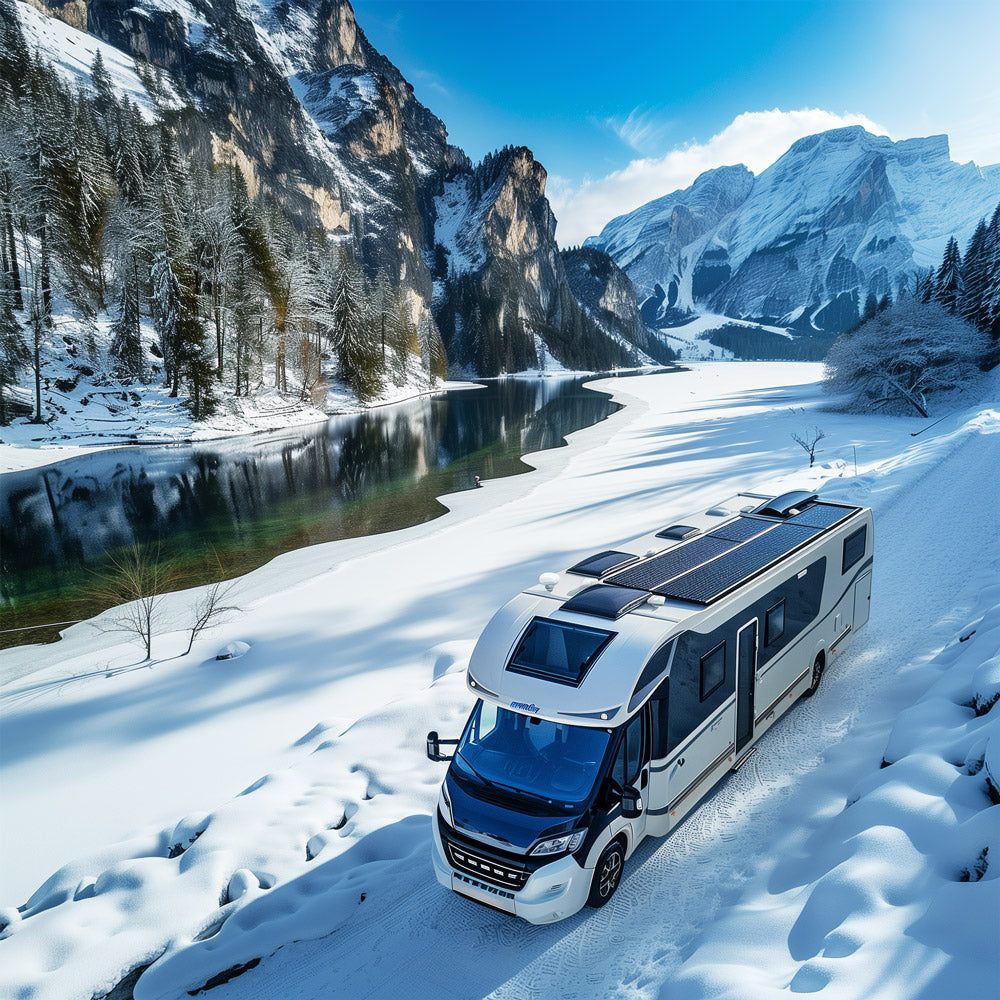
Optimierung der Batterielaufzeit
Batteriewächter Wohnmobil: Durch präzise Datenerhebung der Batteriewerte und Elektrik mittels Voltmeter oder Amperemeter können Wohnmobilbesitzer die Nutzung ihrer Stromspeicher optimieren. Ein LCD-Batteriecomputer liefert kontinuierliche Auskunft über Spannung und Stromstärke der Verbraucher, unterstützt durch eine spezielle Software. Frühzeitige Warnungen vor kritischen Zuständen mit einem Batteriecomputer verhindern Tiefentladungen und andere schädliche Einflüsse, die die Lebensdauer der Wohnmobilbatterie beeinträchtigen könnten. Dies gewährleistet nicht nur Kontrolle unterwegs, sondern spart auch langfristig Kosten durch weniger Batteriewechsel.
Optimierung der Batterielaufzeit
Batteriewächter Wohnmobil: Durch präzise Datenerhebung der Batteriewerte und Elektrik mittels Voltmeter oder Amperemeter können Wohnmobilbesitzer die Nutzung ihrer Stromspeicher optimieren. Ein LCD-Batteriecomputer liefert kontinuierliche Auskunft über Spannung und Stromstärke der Verbraucher, unterstützt durch eine spezielle Software. Frühzeitige Warnungen vor kritischen Zuständen mit einem Batteriecomputer verhindern Tiefentladungen und andere schädliche Einflüsse, die die Lebensdauer der Wohnmobilbatterie beeinträchtigen könnten. Dies gewährleistet nicht nur Kontrolle unterwegs, sondern spart auch langfristig Kosten durch weniger Batteriewechsel.

Fragen & Antworten
Wissenswertes über unsere Produkte im Bereich Wohnmobil & CamperVans
Wie funktioniert ein Batteriecomputer für Wohnmobile?
Ein Batteriecomputer für Wohnmobile überwacht und verwaltet den Ladezustand der Batterie in Echtzeit. Er misst kontinuierlich Spannung, Strom und Temperatur durch Sensoren und einen Mess-Shunt. Die gesammelten Daten werden auf einem Display oder einer App angezeigt. Der Nutzer kann so den Batteriezustand überwachen, Tiefentladungen vermeiden und die Batterielebensdauer verlängern.
Moderne Modelle bieten zusätzliche Funktionen wie historische Datenaufzeichnung und Alarmmeldungen bei kritischen Zuständen. Einige Modelle verfügen auch über Bluetooth oder WLAN zur Fernüberwachung, was die Verwaltung und Wartung der Batterien erheblich erleichtert.
Was passiert mit meiner Wohnmobil-Batterie im Winterlager?
Im Winterlager ist die Überwachung der Caravan-Batterie besonders wichtig, um ihre Lebensdauer zu erhalten. Ein Smart Shunt liefert präzise Werte zum Stromspeicherzustand, Stromverbrauch und Fehlermeldungen über eine Software. So bleibt man stets über den Zustand der Bordbatterie informiert, kann die Energieversorgung mit einem Shunt optimieren und Fehler frühzeitig erkennen. Diese elektrische Überwachung der Wohnraumbatterie per Batteriecomputer gewährleistet eine zuverlässige Verbindung und empfiehlt sich für alle Wohnmobile.
Eine Aufbaubatterie mit Messshunt ermöglicht präzise Überwachung der Elektrik im Caravan. Verbraucher und Energieverbrauch werden auf dem Display angezeigt, was eine genaue Anzeige und effiziente Nutzung der Energie gewährleistet.
Wie kann ich die Spannung der Zweitbatterie im Wohnmobil überwachen?
Batterieüberwachung Wohnmobil: Um die Spannung der Zweitbatterie im Reisemobil effektiv zu überwachen, ist ein Batteriemonitor unerlässlich. Dieser CamperVan Batteriemonitor, wie z.B. ein Gerät mit einem Mess Shunt am Minuspol der Batterie, misst präzise den Ladezustand und andere relevante Batteriedaten, auch einer Solaranlage. Über ein Display können diese Informationen leicht abgelesen werden.
Der Batteriemonitor bietet auch die Möglichkeit, Fehler und den Zustand der Bord-Batterie kontinuierlich zu überwachen. Für eine zuverlässige Überwachung und Empfehlungen zur Optimierung des Ladezustandes ist ein solcher Batteriemonitor eine sinnvolle Investition für jedes Reisemobil.
Wie kann ich die Spannung der Zweitbatterie im Wohnmobil überwachen?
Batterieanzeige Wohnmobil: Um die Spannung der Zweitbatterie im Caravan zu überwachen, ist ein Batteriecomputer mit einem Mess-Shunt entscheidend. Dieses Gerät ermöglicht die präzise Anzeige der Batteriespannung über ein LCD-Display oder eine Software, die über Bluetooth mit dem Caravan verbunden ist. Damit lassen sich der Ladezustand der Versorgungsbatterie sowie der Verbrauch der angeschlossenen Geräte jederzeit kontrollieren. Ein solcher Batteriemonitor ist ideal für Vans und Caravan, da er die Leistung des Stromspeichers überwacht und wichtige Informationen zur Verfügung stellt.
Welche Batterie brauche ich für ein Wohnmobil?
Für ein CamperVan sind spezielle Batterien erforderlich, die den hohen Energiebedarf decken können. Empfehlenswert sind Versorgungsbatterien, wie AGM-, Gel- oder Lithium-Batterien. Ein Mobilheim Spannungswächter und Batterie Computer hilft, den Ladezustand und die Energieleistung der Batterie effizient zu überwachen. Ein Batteriecomputer mit integriertem Mess Shunt ermöglicht eine präzise Batterie-Überwachung der Verbraucher und zeigt den Energiestatus in Echtzeit an. Diese Technologie stellt sicher, dass die Batterie stets optimal genutzt wird und verlängert die Lebensdauer. Ein guter Batterie Computer ist daher unerlässlich für die zuverlässige Energieversorgung in Wohnmobilen.
Wie lange hält eine 100Ah Batterie im Wohnmobil?
Die Dauer, die eine 100Ah Batterie im Camper hält, hängt von den Voraussetzungen und den angeschlossenen Verbrauchern ab. Um die Batterienutzung zu optimieren, ist eine genaue Spannungsmessung mit Shunt erforderlich. Ein Messshunt kann dabei helfen, den genauen Stromverbrauch zu überwachen. Die Batterieanzeige per Batteriecomputer liefert Echtzeitinformationen über die verbleibende Ladung und den aktuellen Energiebedarf. Regelmäßige Überprüfung der Anschlüsse und eine korrekte Ladung der Batterie sind ebenfalls wichtig. Die Empfehlung lautet, bei hoher Belastung sparsam mit der Energie umzugehen, um die Batterielebensdauer zu maximieren
Noch mehr Wissen
Sollte ich mein Wohnmobil immer am Strom lassen?
Es ist nicht empfehlenswert, das Wohnmobil dauerhaft am Strom zu lassen. Langfristiges Anschließen kann die Batterien überladen und deren Lebensdauer verkürzen. Stattdessen sollten Sie ein Erhaltungsladegerät verwenden, das die Batterien bei optimaler Spannung hält.
- Erhaltungsladegerät: Dieses Gerät verhindert Überladung und hält die Batterien in gutem Zustand.
- Regelmäßige Überprüfung: Überprüfen Sie den Ladezustand der Batterien regelmäßig und laden Sie sie bei Bedarf nach.
- Abklemmen: Wenn das Wohnmobil längere Zeit nicht genutzt wird, sollten die Batterien abgeklemmt werden, um Energieverluste zu minimieren.
Diese Maßnahmen tragen zur Verlängerung der Batterielebensdauer bei.
Reicht meine Batterieladung im Wohnmobil für die ganze Nacht?
Ob die Batterieladung im Wohnmobil für die ganze Nacht ausreicht, hängt vom Stromverbrauch der Geräte ab. Berechnen Sie den Gesamtenergiebedarf aller über Nacht genutzten Geräte in Amperestunden (Ah).
- Energiebedarf berechnen: Addieren Sie die Ah aller Geräte, die über Nacht laufen (z.B. Licht, Kühlschrank, Heizung).
- Batteriekapazität prüfen: Stellen Sie sicher, dass die Batteriekapazität diesen Bedarf decken kann.
Beispiel: Wenn der Gesamtbedarf 20Ah beträgt und Ihre Batterie 100Ah hat, sollte die Ladung ausreichen, wenn die Batterie voll geladen ist. Planen Sie eine Reserve ein, um Tiefentladung zu vermeiden und die Batterielebensdauer zu maximieren.
Wie kann ich von Zuhause die Batterie meines Wohnmobils in der Garage im Winterlager überwachen?
Um die Batterie Ihres Wohnmobils im Winterlager von Zuhause aus zu überwachen, können Sie ein Smart-Batteriemonitoring-System verwenden:
- Smart-Batteriemonitor: Installieren Sie einen Batteriemonitor mit Bluetooth oder WLAN-Funktionalität.
- App-Verbindung: Verbinden Sie den Monitor mit einer speziellen App auf Ihrem Smartphone oder Tablet.
- Echtzeitdaten: Überwachen Sie den Ladezustand, die Spannung und andere wichtige Parameter in Echtzeit.
Diese Systeme bieten auch Benachrichtigungen bei kritischen Zuständen, sodass Sie rechtzeitig reagieren können. Durch die Nutzung eines solchen Systems bleiben Sie stets informiert und können die Batterielebensdauer maximieren.

Überwachung von Camper & Wohnmobil
Zum BatteriewächterDHL Versand innerhalb Europas
Versand per DHL auch an Packstation / Postfiliale und europaweit
Kundenservice
Haben Sie Fragen? battery@hoots.de
HOOTS Empfehlen
Sie möchten HOOTS BATTERY auf Ihren Social Media Kanälen z.B. YouTube vorstellen oder vertreiben? battery@hoots.de
Sichere Bezahlmethoden
Apple Pay | Google Pay | PayPal | Klarna Rechnung | Visa | Mastercard | Vorkasse
